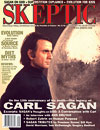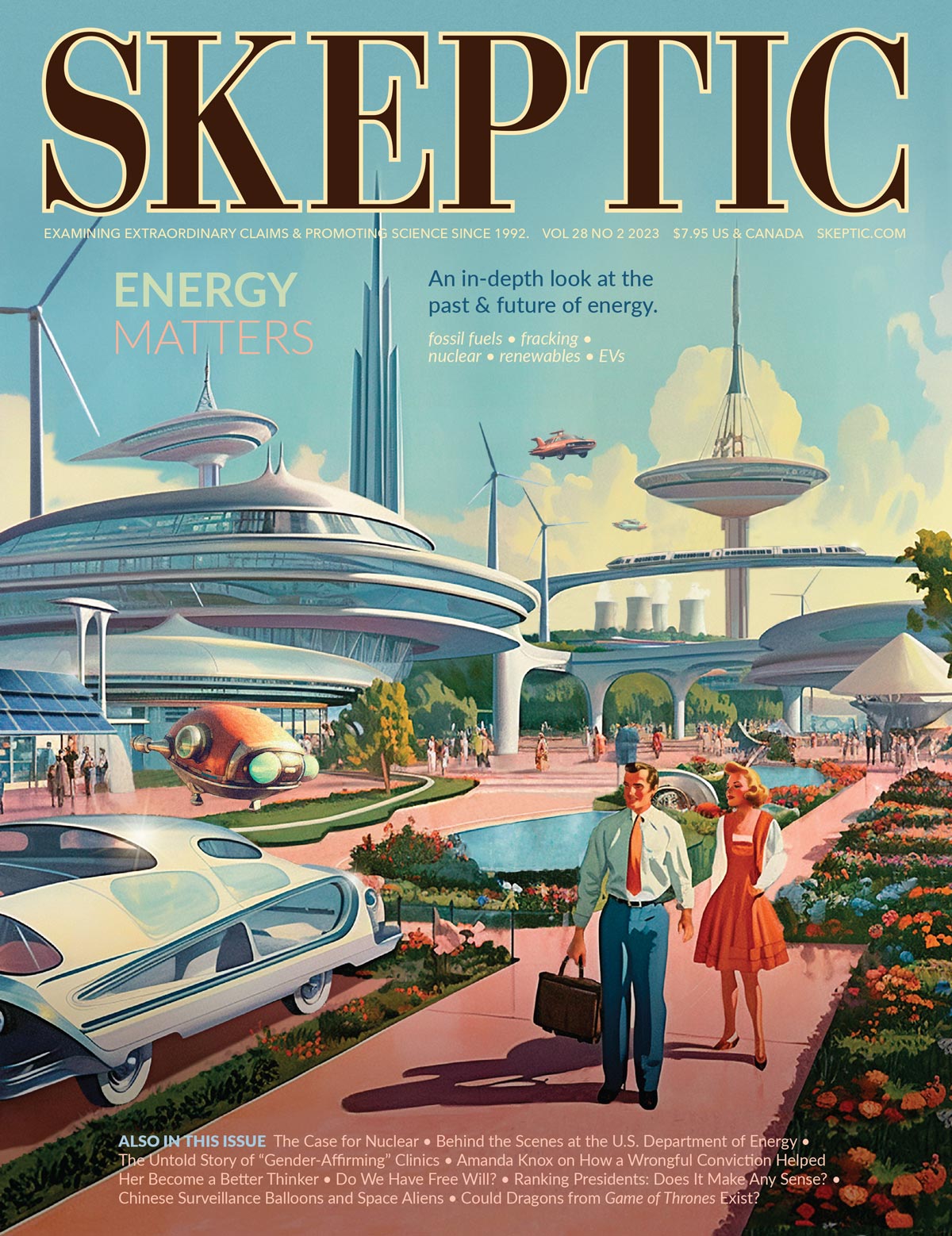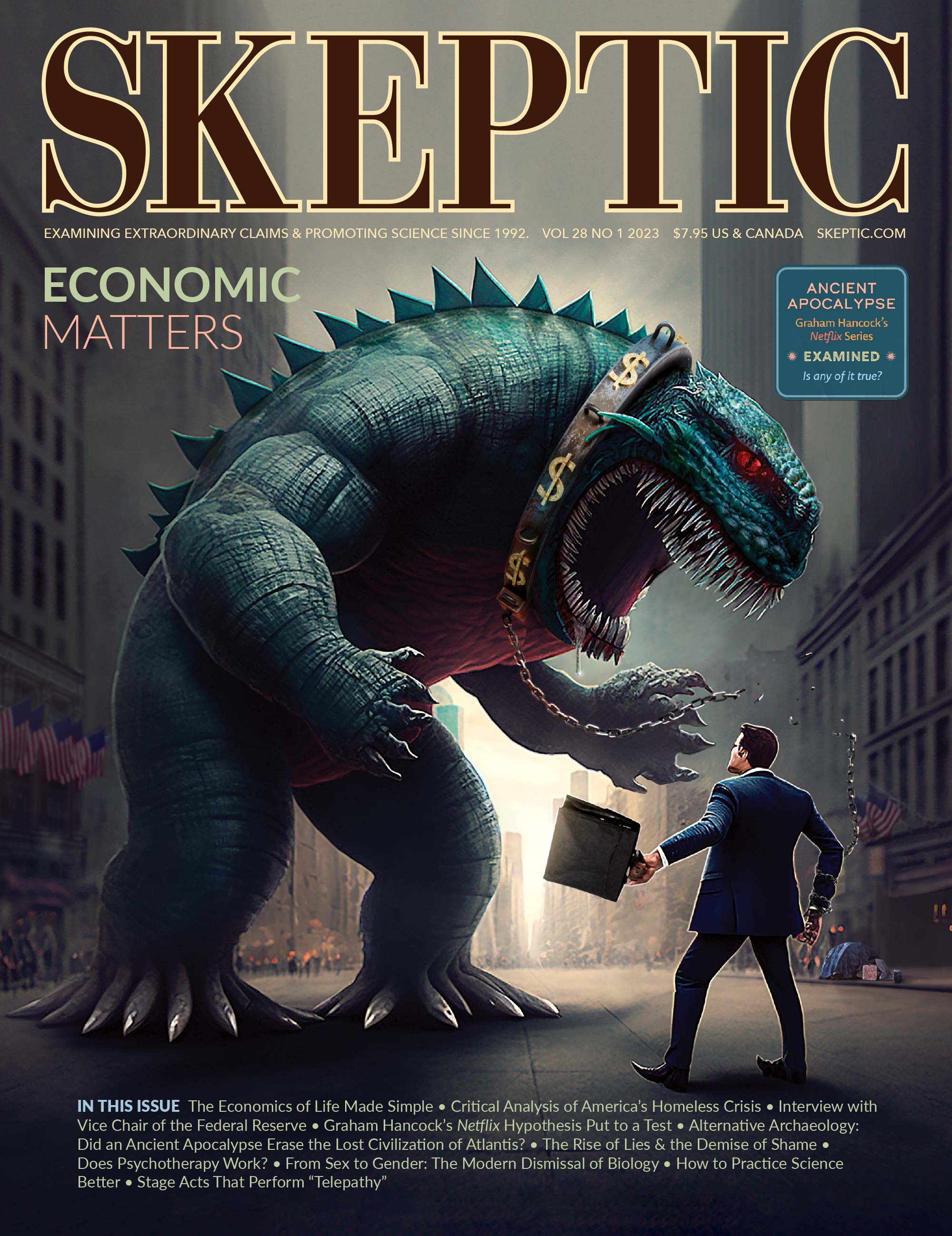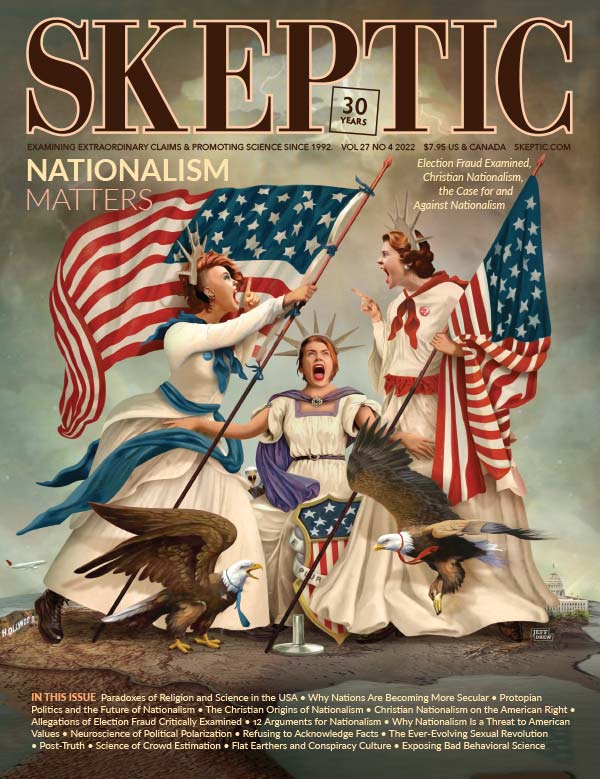
Thomas R. McDonough is a Senior Scientist at the Skeptics Society. With a Ph.D. in astrophysics from Cornell, he has worked at JPL and Caltech, and was the SETI Coordinator of The Planetary Society for 23 years. He is the author of several books, including the novel, The Architects of Hyperspace.
When I was a grad student of astrophysics at Cornell in the late 1960s, I ploughed through dry scientific journals. Occasionally, I found papers bordering on science fiction, hidden within them like naughty pictures. These gems were often by an obscure Harvard scientist named Carl Sagan. They spoke about the possibility of life on other worlds, a subject almost taboo in science at that time.
He had recently published a book, Intelligent Life in the Universe, with the Russian astrophysicist Iosef Shklovskii. It was filled with a dazzling array of arguments about the possibility of life on other worlds and how it might be found, as well as cautions about how easily we could be fooled by things like UFOs. This book became the bible of the field.
Carl was invited to visit Cornell and give a lecture. I eagerly awaited this chance to see him for the first time. In a room full of astronomy professors and students, he spoke with great eloquence as he interwove astronomy with physics, chemistry and biology. His enthusiasm was contagious as he described many possibilities for life elsewhere in the universe.
At about that time, scientists in England discovered something that looked like an extraterrestrial civilization transmitting to us. Radio signals from the sky pulsated with the regularity of an atomic clock, like the ticking of an alien timepiece. Nothing like them had ever been seen. Astronomers nervously considered the possibility that these signals really were from aliens. They even nicknamed them “LGMs” — Little Green Men. We now call them pulsars.
During my summer vacation, I wrote an article about this discovery and the arguments for and against alien origin. Carl had just become a professor at Cornell, and I interviewed him. The article appeared in Analog magazine in 1969, with this description: “Cornell’s Professor Sagan looks typecast for the Hollywood part of the brilliant, handsome young scientist who, in one of those boy-meets-girl-meets-monster epics, saves the beautiful girl from the clutches of the Evil Menace from Outer Space, a task for which he’s better qualified than most other human beings.”
Few scientists at this time thought about extraterrestrial life. This is odd, because Copernicus had shown 500 years earlier that we were not the center of the universe. Ever since, scientists and fiction writers had speculated about life on other worlds. But Mars had given E.T.’s a bad rep. In the 19th century, Martian “canals” had been discovered, and American astronomer Percival Lowell claimed he had detected the presence of an advanced civilization there. But 20th-century telescopes, prior to the space age, showed Mars to be a desolate place, inhospitable to life. To most astronomers, extraterrestrials deserved nothing more than an appearance in science-fiction books and films.
There were a few exceptions. In 1959, Giuseppe Cocconi and Philip Morrison proposed looking for radio signals from other civilizations. Shortly thereafter, Frank Drake conducted the first modern search for such signals. Later, after Drake moved to Cornell, he encouraged likeminded Carl to come there.
The quality of Carl’s research on more conventional subjects, such as the atmospheres of Mars and Venus and the biochemistry of the origin of life, put his scientific reputation on a firm footing. This forced other researchers to take seriously his arguments about the search for extraterrestrial intelligence (SETI). Over the years, he and his colleagues challenged the thinking of the scientific community so successfully that the idea of extraterrestrial civilizations became respectable.
While his intellectual powers swayed scientists, it was his wit and charisma, combined with his ability to explain science in plain English, that made him increasingly popular on TV shows. He was invited back repeatedly on Johnny Carson’s popular talk show, exposing Carl to a wide audience that rarely saw scientists.
In 1979, Carl and two other scientists, Bruce Murray and Louis Friedman, created a private, nonprofit organization, The Planetary Society, to further spread the good word about space exploration and SETI. Because of Carl’s fame, the Society quickly drew 100,000 members, and became the largest private space-interest group in the world. Before long, it was advising Congress about what we should be doing in space, and even sponsoring its own SETI projects.
The climax of his influence on the public was the PBS television documentary series Cosmos in 1980. It became the most-watched public-TV show in history, seen by half a billion people. It also put him on the cover of Time magazine, where he waded in an ocean of stars — one of his favorite metaphors for space exploration. Cosmos inspired generations of youngsters to become scientists.
Scientists often look down jealously upon their own kind when one becomes popular, as if it were a sin to speak too clearly about the arcane world of research. But a part of Carl’s legacy is that his phenomenal popularity around the globe has inspired more scientists to step out of their ivory towers and confront the TV cameras with comprehensible words about the exciting discoveries of science.
SETI continues. It is a difficult search, because the universe is vast and the number of channels by which E.T.’s might communicate is huge. The search has been going on for decades. But if it is successful and we one day tune in to a channel of extraterrestrial television, this will be the ultimate legacy of Carl Sagan.
This article can be found in
volume 13 number 1
The Legacy of Carl Sagan
this issue includes: An Interview with Ann Druyan; Science, Religion & Human Purpose; An excerpt from Conversations with Carl; Tributes to Carl Sagan…
BROWSE this issue >
This issue is sold out.
This article was published on October 2, 2009.
















very nice. one of my heroes